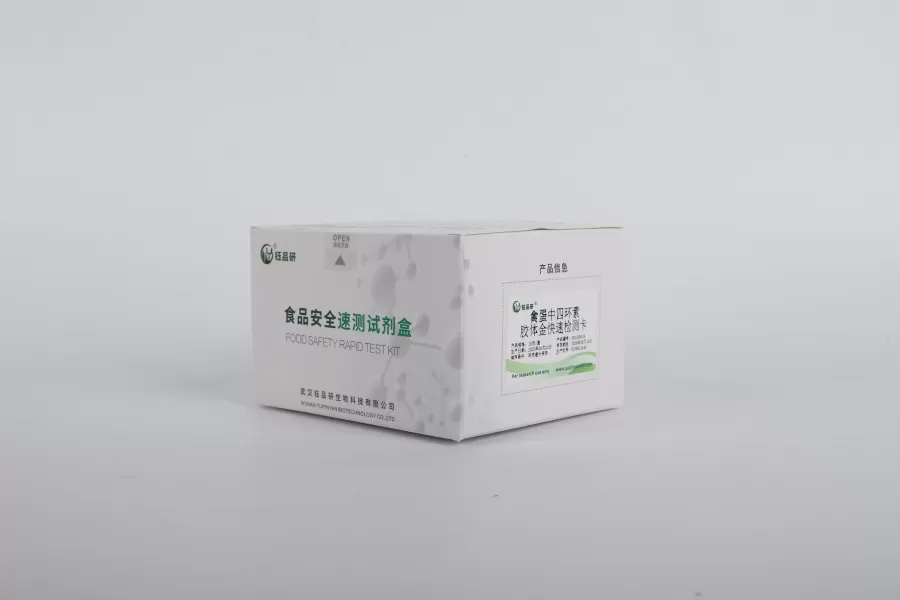As a common source of nutrition in the daily diet, the safety of poultry eggs has always been a concern. From the breeding environment to transportation and storage, omissions in any link can lead to risks such as salmonella and antibiotic residues. Traditional testing methods often rely on professional laboratories, which are time-consuming and require complex equipment, which discourages ordinary consumers and small businesses. The appearance of the poultry egg detection card provides a "fast, convenient and accurate" solution for non-professionals, making safety testing simple and operable.
1. Why choose the poultry egg detection card?

The poultry egg detection card is a rapid detection product based on immunochromatography technology. It only takes a few simple steps, 3-10 minutes to produce results, and the operation does not require professional background. It can be intuitively judged by color changes. Compared with traditional detection, its advantages are:
✅ fast and efficient: no need to wait for laboratory reports, the results can be known on the spot;
✅ simple operation: no professional training, follow the instructions steps, novices can get started;
✅ portable and flexible: small size, can be carried, suitable for family, market, small businesses and other scenarios;
✅ accurate and reliable: using colloidal gold immunochromatography technology, the detection sensitivity reaches the national standard, and the result accuracy is high.
Second, non-professional operation guide: 5 steps to easily complete the detection
#1. Preparation: Inspection tools and sample
- Take out the egg inspection card to confirm that the packaging is intact and within the shelf life (usually 12-24 months, the specific instructions shall prevail);
- Prepare the eggs to be tested (it is recommended to choose fresh, undamaged eggs/duck eggs), as well as clean containers (such as small dishes, disposable paper cups), water (for washing hands).
#2. Sample collection: obtain the detection substance in the egg
- wash the surface stains of the eggshell with water and dry it;
- gently tap out the small hole at the top of the eggshell with a sterile egg opener, pour the egg contents (egg white + egg yolk) into a clean container, stir evenly;
- if the whole egg is detected (such as judging whether there is overall contamination), a small amount of the contents (about 1-2ml) can be directly taken; if the surface residue of the eggshell is detected, use a sterile cotton swab dipped in a small amount of normal saline to wipe the eggshell directly.
#3. Extract the sample: release the object detection
- according to the instructions of the detection card, add the matching extraction solution (usually buffer) to the sample, gently shake and mix for 3-5 seconds;
- if the sample is a liquid (such as the content), directly take the supernatant; if it is a solid (such as with a shell detection), the extracted liquid needs to stand for 1-2 minutes and take the supernatant (to avoid impurity interference).
#4. Add the test card: start the test program
- open the test card package, slowly drop the extracted sample liquid into the sample hole along the card slot (be careful not to overflow);
- according to the requirements of the manual, start timing after adding the sample and wait for the test card reaction (usually 3-5 minutes, some products take 10 minutes, subject to the manual).
#5. Interpretation results:
- observe the quality control line (C line) and test line (T line) on the test card:
✅ both lines are colored: the result is negative (the target substance is not detected, safe and edible);
✅ only the quality control line is colored, and the test line is not colored: the result is positive (the target substance is detected, and it is not recommended to eat);
✅ quality control line is not colored: the test card is invalid and needs to be re-tested.
3. Precautions: ensure that the test results are accurate
1. Sample processing: the sample needs to be fully mixed before testing to avoid deviation due to stratification; if there are a lot of impurities in the sample, you can let it stand first and then take the supernatant.
2. Operating environment: Avoid humid and high temperature environment during testing. The temperature is recommended to be between 15-30 ° C. Too low or too high may affect the reaction speed.
3. Result time: After the specified time (such as 15 minutes), the result may be inaccurate and should be strictly operated according to the instructions.
4. Storage method: The unopened test card needs to be sealed and protected from light and stored at room temperature. It needs to be used within 1 hour after opening.
four, applicable scenarios: let safety testing everywhere
- family daily: worried about supermarkets, the market to buy eggs have safety hazards, rapid detection after eating more assured;
- small businesses: the purchase of eggs sampling, to avoid substandard products into the market;
- market supervision: mobile testing portable and efficient, rapid screening of illegal products;
- catering industry: canteens, restaurants after the purchase of eggs, on-site testing to ensure the safety of ingredients.
eggs safety is no small matter, choose the egg detection card, no professional background, but also easy to grasp the safety initiative. Through simple operation, quickly identify risks, for their own and family's diet health more protection. Let every egg eat at ease, so that food safety testing is no longer a "problem" in the professional field.

